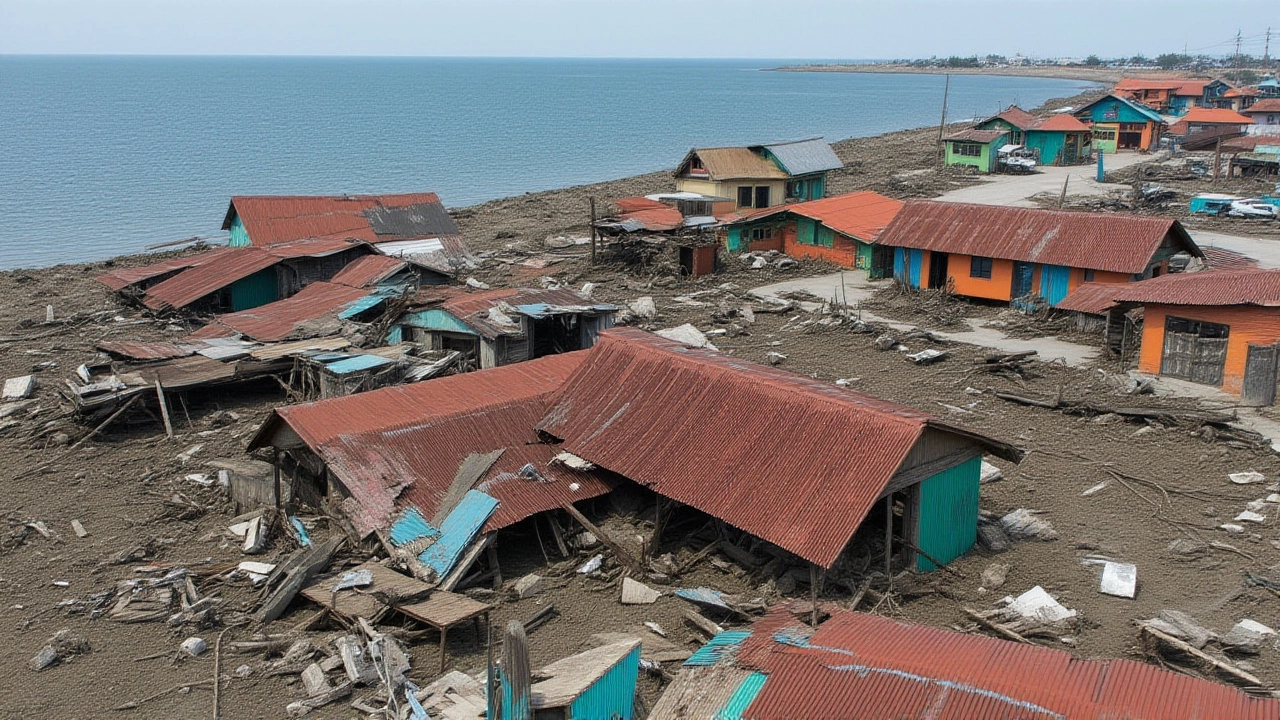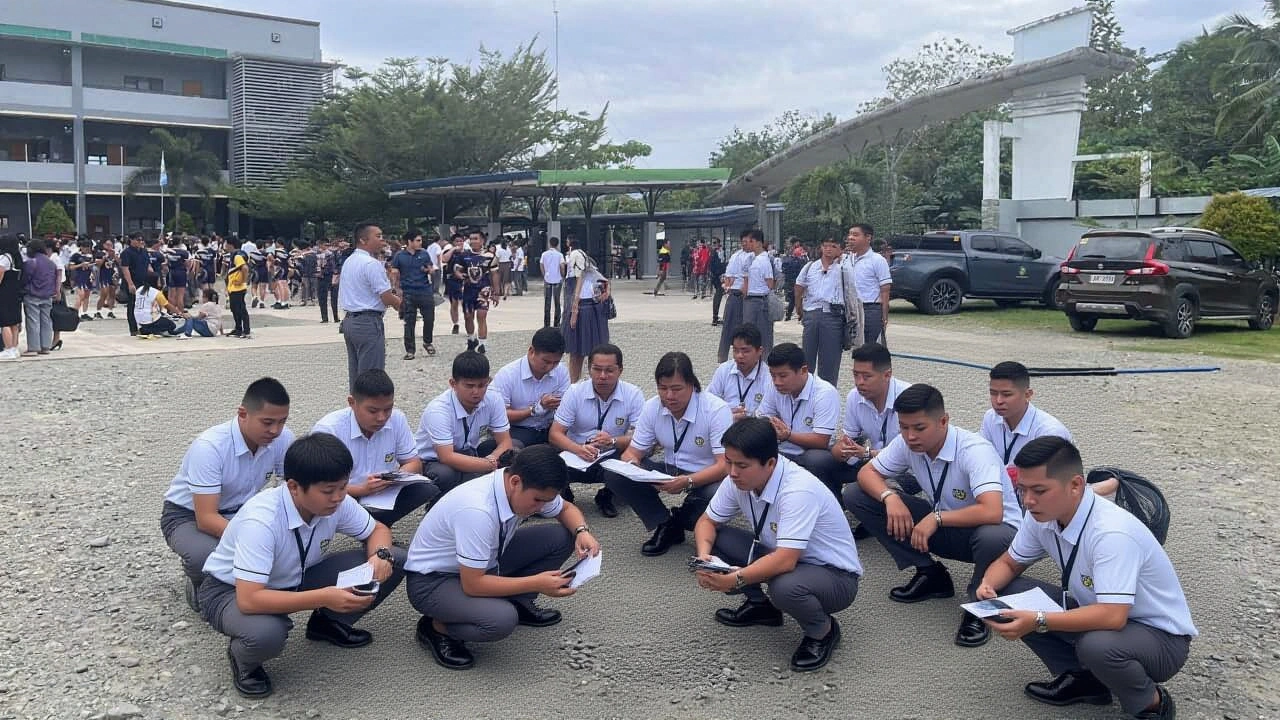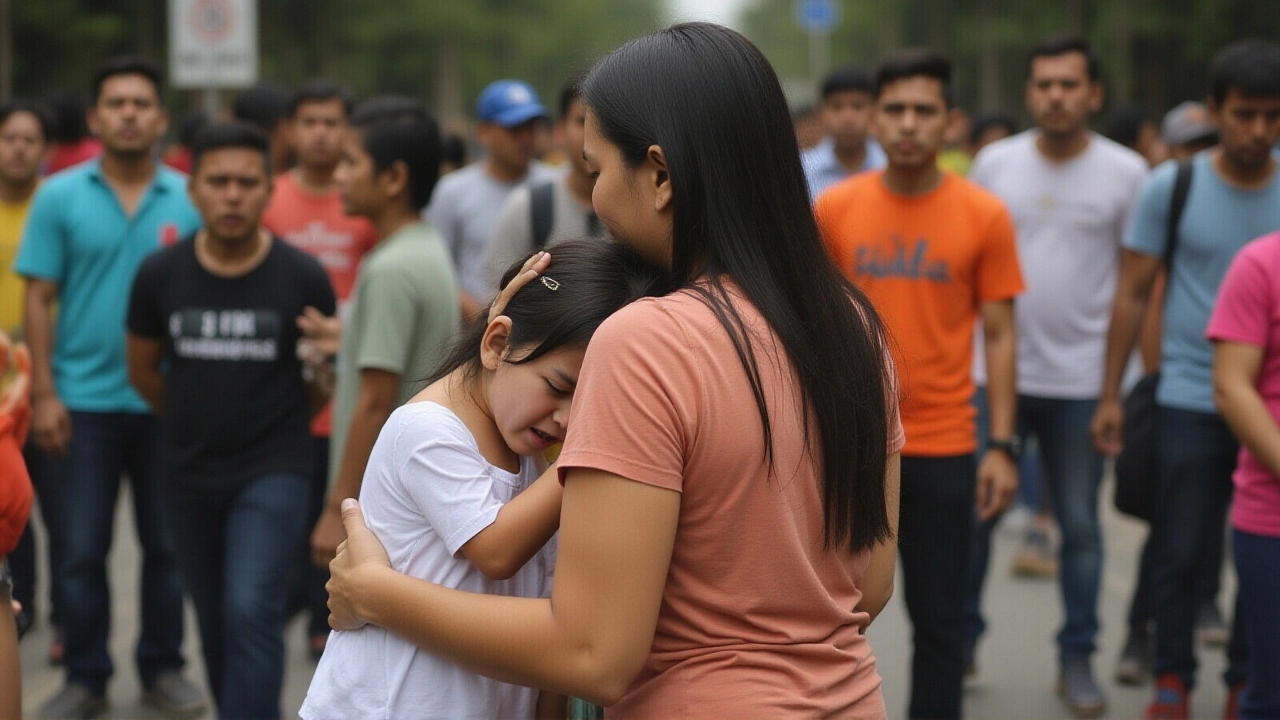10 Oct 2025
- 0 Comments
At 8:07 AM local time on October 10, 2025, a shallow earthquake measuring 7.4 on the Richter scale rocked the coastline of Mindanao, the Philippines’ second‑largest island, and set off a chain of emergencies that still echo today.
What happened and why it mattered
The tremor, centered 23 km beneath the sea floor at 6.885° N, 126.102° E, lasted roughly 30‑40 seconds. Buildings swayed, windows shattered, and traffic in Davao City, General Santos City, and Cotabato City ground to a halt as residents clung to door frames and lamp posts. Within minutes, the Philippine Institute of Volcanology and Seismology (PHIVOLCS) issued a tsunami warning, prompting coastal communities to move inland.
Just over five hours later, at 1:30 PM, a 6.9‑magnitude aftershock struck 45 km northeast of the original epicenter (7.120° N, 126.355° E). That jolt re‑triggered the tsunami alert, even though wave gauges recorded a modest 0.3 m rise at Sarangani Bay. The aftershock was the strongest of at least 300 recorded tremors and was felt as far away as North Sulawesi, Indonesia.
Immediate human impact
Casualties rose to six confirmed deaths, with injuries reported in 14 municipalities. The Philippine Red Cross’s chairman and CEO, Richard J. Gordon, appeared on live television to pledge 45 emergency response vehicles, each loaded with 12,000 relief packs containing roughly 500,000 individual meals. By 3:00 PM, the agency had already dispatched supplies from its regional warehouses in Davao and Cagayan de Oro.
Power outages affected an estimated 2.3 million customers across Regions IX, X, and XI, according to PowerGrid Corporation of the Philippines. The national transmission operator confirmed that the outages stemmed from damage to the 1.2‑km Davao Coastal Road and a 30‑cm crack across the 500‑m Maguindanao Bridge.
Response coordination
Within an hour of the main shock, the National Disaster Risk Reduction and Management Council (NDRRMC), led by Secretary Eduardo Del Rosario, activated its Incident Command System. Twelve emergency operations centers sprang up across the island, each feeding real‑time data to a centralized dashboard. "We’re seeing dozens of calls about people trapped in elevators, collapsed roofs, and blocked roads," a police spokesperson told reporters. The Philippine National Police logged 47 emergency calls in the first hour alone.
Internet connectivity slowed dramatically, hampering both civilian updates and official messaging. Nonetheless, PHIVOLCS kept the public informed, warning of a 70 % probability of additional magnitude‑5.0+ tremors within the next 72 hours.

Damage snapshot
- At least 12 multi‑storey commercial buildings in Davao’s downtown district suffered façade failures.
- The Davao Coastal Road suffered a partial collapse, cutting off key supply routes.
- Cracks up to 30 cm wide appeared on the Maguindanao Bridge, rendering it temporarily unusable.
- More than 1,800 km of minor roadways across Mindanao reported surface fissures.
Emergency crews worked through the night to clear debris and restore power. By the next morning, 60 % of the affected customers had electricity, and three of the four major bridges were back in service.
Historical perspective
This is the strongest seismic event to strike Mindanao since the 1976 Moro Gulf earthquake, which measured 7.5 and produced a deadly 9‑meter tsunami that killed over 5,000 people. The 2025 quake, while powerful, spared the island from a comparable wave height, thanks in part to early warning systems and better building codes introduced after the 1990 Luzon quake.
Scientists at the United States Geological Survey (USGS) continue to monitor aftershock patterns. Their preliminary analysis suggests the tectonic stress release is consistent with a subduction‑zone rupture, similar to the one that generated the 2015 Nepal quake.

What comes next
PHIVOLCS maintains a 72‑hour high‑alert status, urging residents to stay away from coastal cliffs and to secure heavy furniture. The NDRRMC aims to have critical infrastructure fully restored within 14 days, a target based on damage‑assessment protocols refined after Typhoon Rai in 2021.
Long‑term recovery will likely involve retrofitting older structures, expanding early‑warning siren networks, and bolstering community disaster drills. "We can’t prevent the earth from moving, but we can certainly improve how we respond," Gordon said during a follow‑up interview.
Key takeaways
- 7.4‑magnitude quake strikes Mindanao at 8:07 AM, followed by a 6.9 aftershock at 1:30 PM.
- Six deaths, 2.3 million power outages, and extensive road and bridge damage.
- Philippine Red Cross deploys 45 vehicles with 12,000 relief packs.
- PHIVOLCS forecasts a 70 % chance of further magnitude‑5+ tremors within 72 hours.
- Full restoration of critical services targeted within 14 days.
Frequently Asked Questions
How are the aftershocks affecting rescue operations?
Repeated tremors have forced rescue teams to pause work each time the ground shakes, especially around unstable structures. PHIVOLCS advises crews to prioritize areas with lower aftershock risk, delaying some roof‑collapse investigations by up to 24 hours.
What measures are being taken to prevent a larger tsunami?
Coastal monitoring stations have been upgraded with real‑time GPS buoys, and the Philippine Atmospheric, Geophysical and Astronomical Services Administration (PAGASA) continues to issue tide‑gauge updates every 10 minutes. Communities remaining under alert are instructed to move to higher ground and avoid low‑lying beaches.
Why did the tsunami warning get lifted and then reissued?
The initial warning was based on the main 7.4‑magnitude quake’s displacement of the sea floor. When the 6.9‑magnitude aftershock occurred, new displacement data suggested a renewed, though still modest, wave potential, prompting a brief re‑alert before measurements showed wave heights stayed below the 0.5‑meter threshold.
How is power being restored to the 2.3 million affected customers?
PowerGrid crews are deploying mobile generators and prioritizing hospitals, water‑treatment plants, and communication hubs. By the second day, roughly 60 % of the outage zones had power, with full restoration projected within two weeks as damaged transmission lines are repaired.
What lessons from the 1976 Moro Gulf earthquake are being applied now?
The 1976 disaster led to stricter coastal zoning, mandatory tsunami‑aware building designs, and a nationwide siren network. Today, those systems helped authorities issue timely alerts and prevent a larger loss of life despite the quake’s magnitude.
